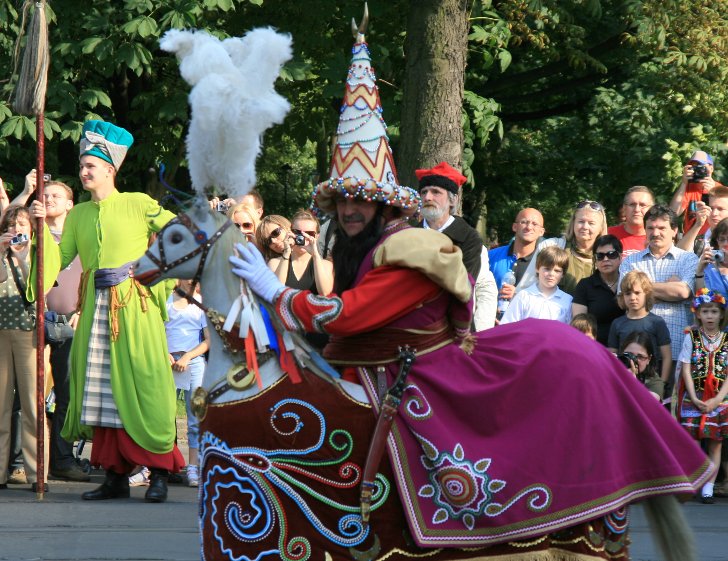The Lajkonik is a folklore character whose origin is typically associated with the Mongol invasion of Poland, although some researchers believe that it originated in pre-Christian times. The Lajkonic is a bearded man dressed in Mongol attire, including a signature pointed hat, with a hobby horse around his waist.
The Tatars ravaged the city of Krakow several times during the 13th century and eventually assumed the position of bogeymen in regional folklore. As far as the origin of the festival is concerned, there are two major legends associated with it. According to the first one, the people of Krakow killed a Tatar Khan when the city was attacked, and one of Krakow’s defenders triumphantly rode into the city dressed in the dead Khan’s clothes. The other legend claims that a group of locals tried to prank the people of Krakow by dressing up like Tatars on horses. When their true identity was discovered, the people of the city were relieved and held a celebration.
Whatever the origin, the Lajkonic Festival has been held every June for more than 700 years. The central figure of the celebration is the Lajkonik himself, accompanied by revelers in traditional folklore costumes or in oriental garments, musicians, and folk dance groups. The Lajkonik rides a white hobby horse through the historic streets of Krakow, from the Premonstratensian Convent in the district of Zwierzyniec to the main square of the Old Town.
On his way, the Lajkonik touches onlookers with a golden mace. Being touched by the mace is considered a sign of good luck. At the Market Square, the mayor of Krakow presents the Lajkonik with a symbolic ransom, and they drink to the well-being of Krakow from a chalice. The ceremony is followed by traditional music and dancing in front of the Cloth Hall and the Town Hall Tower.

Photo: ImreKiss, Wikimedia Commons




